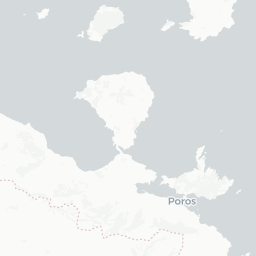





Methana Survey 1982-1987: Season 1987
Survey: Systematic fieldwalking survey
On Methana Peter James and Gary Taylor investigated the effects of erosion on sites of different periods, namely MS206/MS208 (Early Helladic), MS220 (Classical) and MS69 (Late Roman). Following an approach tested in a pilot survey of MS66 in 1986, the distribution of artefacts was sampled using a 0.5 by 0.5 metre quadrat, and each artefact was described in terms of its age, size and degree of wear. Near-surface soil was described at selected quadrats at a distance from each site, and from certain locations around MS220 samples were collected for analysis of phosphorus and magnetic mineralogy. The artefact data are to be coded for analysis of spatial patterns in relation to site location, slope morphology and soil conditions. The soil parameters will be tested for their application to the archaeological problems of the region. Twelve of the sites located in 1984-86 were revisited to confirm that a site existed and to collect a further sample of artefacts so that the period or periods of use could be checked. Almost 50% of the 103 sites recorded on the survey have been restudied. Throughout the season there was a study team based in Poros Museum. Christopher Mee and David Gill were responsible for the pottery, Gary Taylor for the stone. Hugh Bowden and Sarah Wild drew approximately 1,200 of the registered finds. Our interpretation of the chronological range and function of sites was refined rather than radically revised. In particular, analysis of the finds from Early Helladic sites suggested that their formation was in some cases the result of geomorphological processes rather than human activity. It became clear that the quantity of Early Iron Age pottery had been underestimated but settlement was restricted. This is also the case in the Archaic period but Classical sites were ubiquitous. Study of the pottery indicates that the increase in the number of sites was a late fifth and fourth century phenomenon. In the Hellenistic period Ancient Methana emerges as the one major settlement, and there may be a large scale of abandonment of rural sites in the third century. The number of Early Roman sites is certainly restricted but this process is reversed in the second and third centuries AD. The distribution of Late Roman sites implies that the agricultural resources of Methana were once again being heavily exploited but analysis of the finds suggests that the sites were not invariably residential. A further phase of abandonment is initiated after AD500 but some sites survive into the seventh century.
Active in 1987.

